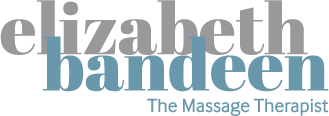Fuel Your Body: Matching Nutrition to Your New Training Routine
Does your new training plan reflect in how you are fuelling your body?
This is something that, after weighing myself, I decided to need to get in hand.
Over the festive period, chocolate for breakfast for two weeks took its toll. No surprises there! The whole conversation around 80% of fat loss happens in the kitchen and not the gym, really does ring true. So why was I letting my inner chimp get the better of me? The inner chimp is the one that makes me forage for chocolate late at night.
Starting a new training routine is exciting! Whether you’ve decided to take up running, strength training, cycling, or a mix of everything, it’s important to remember that your results and overall well-being are deeply connected to how you fuel your body. Getting the right balance of nutrition, movement, and recovery will ensure that your new routine is both effective and enjoyable.
Here’s how to make sure your body has what it needs to thrive while keeping movement joyful and sustainable.
Make Movement Joyful
First things first: movement should feel good. Exercise is not a punishment for what you ate or a chore to check off your list. Instead, it’s an opportunity to celebrate what your body can do. Try different activities to find what makes you feel alive and energised—whether it’s dancing, hiking, swimming, or weightlifting. When movement feels like a gift, it becomes something you look forward to, not something you dread.
Fueling Your Training Routine
To support your new routine, you need to eat in a way that aligns with your goals and your energy demands. Here are some guidelines to help:
1. Prioritise Protein
Protein is essential for repairing and building muscle, especially after strength training or high-intensity workouts. Include a protein source in every meal, such as:
Lean meats (chicken, turkey, or fish)
Plant-based options (tofu, tempeh, or lentils)
Eggs and dairy (Greek yogurt or cottage cheese)
Protein shakes or bars for convenience
Eggs for breakast for me, means that I don’t look for the belgain buns at 11am.
2. Don’t Fear Carbs
Carbohydrates are your body’s primary energy source. They’re especially important for endurance activities like running or cycling. Focus on complex carbs, which provide sustained energy:
Whole grains (quinoa, brown rice, oats)
Sweet potatoes
Fruits like bananas and berries
I am following The Glucose Goddess plan with her cookbook. Before I have a meal with carbs I have a shot of apple cider vinegar in a wee bit of water. It’s the work of the devil but it helps diminish the glucose spikes that can happen with me. After a HUGE glucose spike, I get a crash, and that makes me reach for more of stuff that makes me really windy.
3. Healthy Fats Matter
Fats support joint health and provide long-lasting energy. Incorporate healthy fats from:
Avocados
Nuts and seeds
Olive oil or coconut oil
Fatty fish like salmon
4. Stay Hydrated
Water is essential for optimal performance and recovery. Aim for at least 2 liters a day, more if you’re sweating heavily. Add an electrolyte drink after particularly intense workouts to replenish lost minerals.
Recovery Is Non-Negotiable
Recovery is just as important as the workout itself. When you give your body time and tools to recover, you build strength, prevent injury, and sustain your motivation. Here’s how to prioritize recovery:
1. Schedule Rest Days
Rest days allow your muscles and nervous system to repair and recharge. Listen to your body; if you’re feeling fatigued, take a break or opt for light movement like a walk.
2. Incorporate Yoga
Yoga is a fantastic complement to any training plan. It improves flexibility, reduces stress, and helps release tension in overworked muscles. A quick 15-20 minute yoga session can make a big difference in how your body feels.
I had a conversation with a client yesterday where I advised that if he is following a 5 day training plan, one of those days should be stretching and yoga. Yoga is not relaxing to do but the benefits can make you feel relaxed! It’s also fantastic supplement to running as the focus on the breathe is so valuable.
3. Treat Yourself to a Massage
Massage is more than just a luxury; it’s a powerful recovery tool. It helps reduce soreness, improve circulation, and promote relaxation. Whether you book a professional massage or use a foam roller at home, make this a regular part of your routine.
I had to get this bit in didn’t I!
Book online with me today across two locations in Glasgow.
Final Thoughts
Your training routine is just one piece of the puzzle. How you fuel your body and prioritise recovery are equally important for achieving your goals and maintaining a healthy, joyful relationship with movement. By nourishing your body with the right foods, listening to what it needs, and treating yourself with care, you’ll create a sustainable and fulfilling fitness journey.
Remember: movement is a celebration, not an obligation. Take care of yourself—and don’t forget to book that massage! Your body will thank you.

